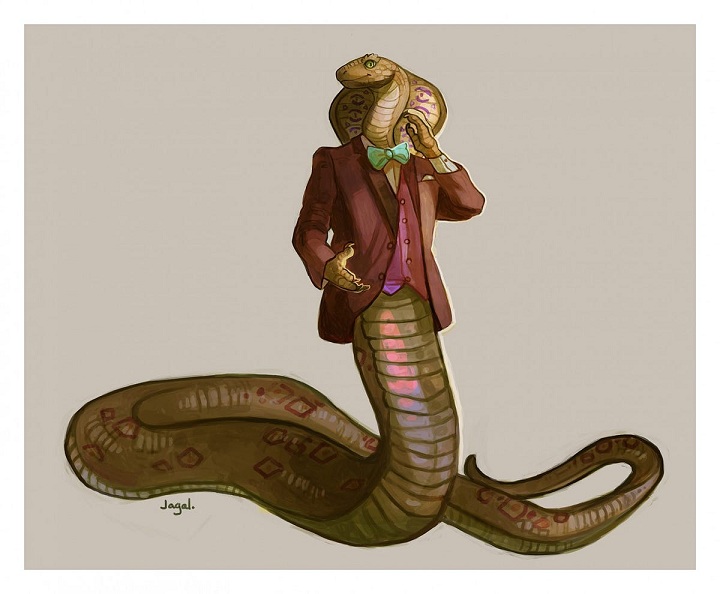Introduction to the Bowtie Snake
The bowtie snake is not your average reptile. With its striking appearance and intriguing behavior, this unique creature has captured the attention of both researchers and animal enthusiasts alike. Found in specific habitats across the globe, the bowtie snake boasts a myriad of characteristics that set it apart from its slithery relatives. As we delve into the world of this fascinating serpent, you’ll discover what makes it truly special—from its physical traits to its diet and conservation status. Whether you’re a seasoned herpetologist or simply curious about nature’s wonders, there’s plenty to learn about the enigmatic bowtie snake!
Physical Characteristics and Habitat
The bowtie snake stands out with its striking appearance. Its name comes from the distinctive pattern resembling a bow tie on its scales. These snakes typically display vibrant colors, ranging from deep browns to bright yellows and greens. This unique coloration helps them blend into their surroundings.
In terms of size, they usually grow between two to four feet long, making them moderate in length yet captivating in presence. Their slender bodies facilitate agile movement through dense vegetation.
These reptiles thrive in diverse habitats, including forests, grasslands, and wetlands. They prefer areas near water sources where they can hunt for prey and bask under the sun efficiently. Such environments provide both shelter and ample opportunities for feeding.
Their adaptability allows them to navigate various terrains effectively while evading predators or seeking mates during breeding season. The bowtie snake’s habitat choices play a crucial role in its life cycle and overall survival strategy.
Behavior and Diet
The bowtie snake exhibits fascinating behaviors that set it apart from other reptiles. Agile and quick, these snakes thrive in their natural habitats, often seen basking on sunlit rocks or slithering through dense foliage. Their movement is graceful yet deliberate, a dance crafted by nature.
When it comes to diet, the bowtie snake primarily feeds on small mammals and birds. It employs stealth tactics while hunting, often waiting patiently for prey to come within striking distance. This ambush strategy highlights its patience and precision.
Bowtie snakes have also been observed engaging in unique social behaviors during certain times of the year. They may gather in groups for mating rituals or share basking spots when temperatures drop slightly. Understanding these aspects of their behavior enhances our appreciation for this remarkable reptile’s adaptability and instincts.
Reproduction and Life Cycle
The reproduction of the bowtie snake is a fascinating process. Mating typically occurs in spring, when temperatures rise and activity increases. Male bowtie snakes display courtship behaviors to attract females, which can include intricate movements and body posturing.
Females lay eggs after mating, usually in hidden spots like rotting logs or damp soil. The clutch size varies but often contains around 5 to 12 eggs. These eggs incubate for several weeks before hatching.
Once hatched, baby snakes emerge fully formed but vulnerable. They rely on their instincts immediately for survival, seeking cover from predators while searching for food. Young bowtie snakes grow rapidly during their first year as they adapt to their environment.
As they mature, these reptiles will take on striking adult patterns that make them easily recognizable within their habitats. Their life cycle continues as they encounter challenges unique to each stage of development.
Threats and Conservation Efforts
The bowtie snake faces various threats in its natural habitat. Habitat destruction is one of the most significant challenges. Urban development and agricultural expansion shrink their living spaces, leading to isolation.
Pollution also poses a risk. Contaminated water sources can affect not only the snakes but their prey as well. This creates a ripple effect on the entire ecosystem.
Conservation efforts are essential for this unique reptile’s survival. Many organizations are working to protect habitats through restoration projects and sustainable practices.
Education plays a crucial role too. Raising awareness about the bowtie snake helps foster appreciation for these creatures and encourages community involvement in conservation initiatives.
By supporting local wildlife protection laws, we can help ensure that future generations have the opportunity to learn about and admire this fascinating species.
Misconceptions and Interesting Facts
The bowtie snake often faces a variety of misconceptions. Some people believe it’s venomous due to its striking appearance, but this reptile is completely harmless to humans.
Another common myth is that it can change color like a chameleon. In reality, the bowtie snake has a consistent pattern and coloration throughout its life.
Despite their name, these snakes don’t wear actual bowties! The unique markings on their bodies resemble elegant patterns instead.
Interestingly, they are known for their remarkable camouflage skills. Their colors help them blend seamlessly into their environment, making them harder to spot by predators.
Bowtie snakes also have a fascinating communication method. They use body language and subtle movements rather than vocal sounds to interact with one another in the wild.
Conclusion: Why the Bowtie Snake Is a Fascinating Creature to Learn About
The bowtie snake captivates reptile enthusiasts and casual observers alike. Its unique appearance, characterized by striking patterns resembling a bowtie, makes it stand out in the animal kingdom. This fascinating creature is not just visually appealing; it also plays a vital role in its ecosystem.
Learning about the bowtie snake provides insights into biodiversity and conservation efforts. As we delve deeper into their behaviors, habitats, and threats they face, we gain a better understanding of our environment’s delicate balance.
Whether you’re an avid herpetologist or someone with a budding interest in reptiles, the bowtie snake offers ample opportunities for discovery. From their intriguing life cycles to their dietary habits, there’s much to appreciate about these remarkable snakes.
Exploring the world of the bowtie snake enriches our knowledge of nature while highlighting the importance of protecting such species for future generations to admire and study. Engage with this incredible reptile today!


